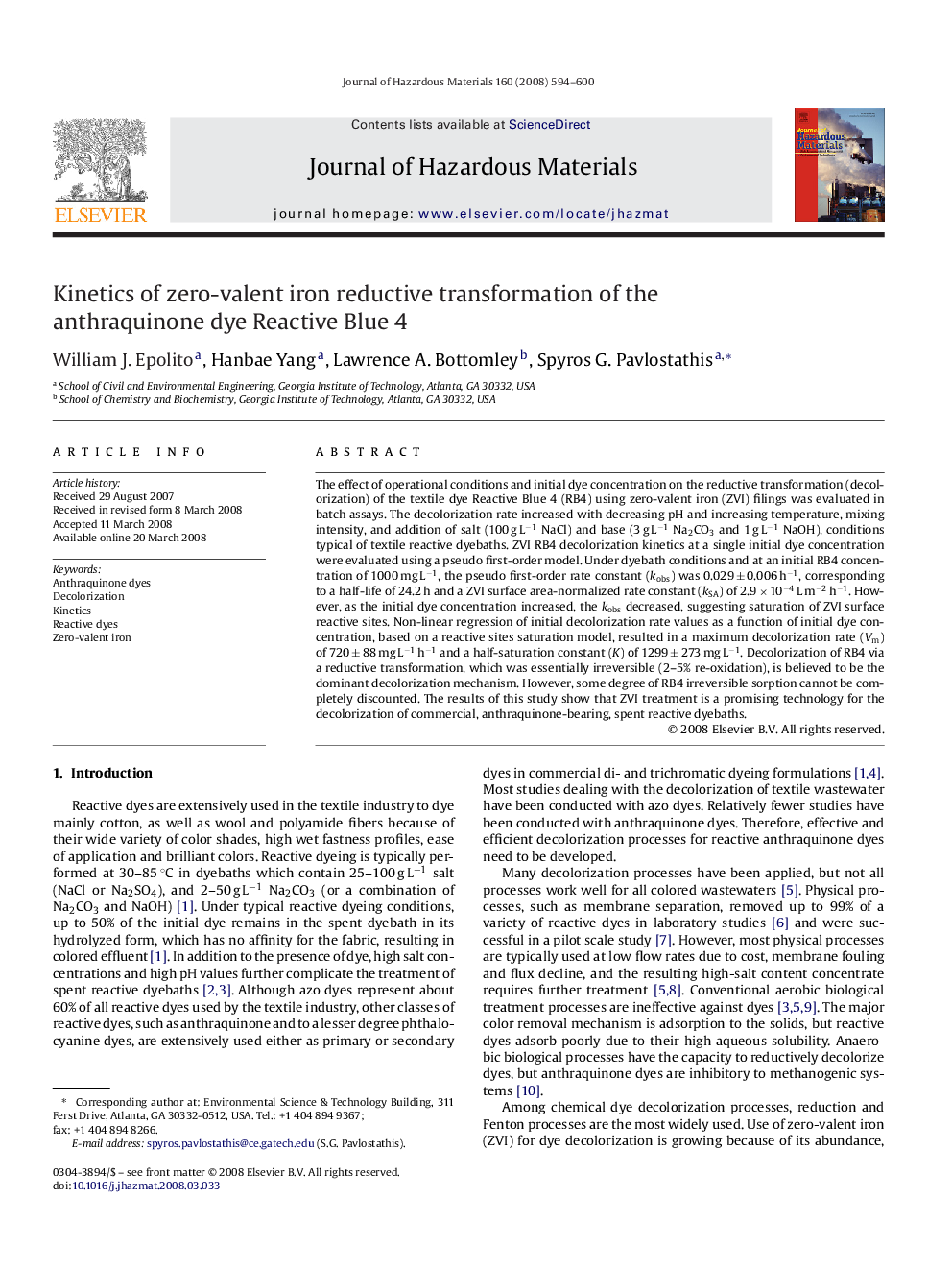| Article ID | Journal | Published Year | Pages | File Type |
|---|---|---|---|---|
| 582760 | Journal of Hazardous Materials | 2008 | 7 Pages |
Abstract
The effect of operational conditions and initial dye concentration on the reductive transformation (decolorization) of the textile dye Reactive Blue 4 (RB4) using zero-valent iron (ZVI) filings was evaluated in batch assays. The decolorization rate increased with decreasing pH and increasing temperature, mixing intensity, and addition of salt (100 g Lâ1 NaCl) and base (3 g Lâ1 Na2CO3 and 1 g Lâ1 NaOH), conditions typical of textile reactive dyebaths. ZVI RB4 decolorization kinetics at a single initial dye concentration were evaluated using a pseudo first-order model. Under dyebath conditions and at an initial RB4 concentration of 1000 mg Lâ1, the pseudo first-order rate constant (kobs) was 0.029 ± 0.006 hâ1, corresponding to a half-life of 24.2 h and a ZVI surface area-normalized rate constant (kSA) of 2.9 Ã 10â4 L mâ2 hâ1. However, as the initial dye concentration increased, the kobs decreased, suggesting saturation of ZVI surface reactive sites. Non-linear regression of initial decolorization rate values as a function of initial dye concentration, based on a reactive sites saturation model, resulted in a maximum decolorization rate (Vm) of 720 ± 88 mg Lâ1 hâ1 and a half-saturation constant (K) of 1299 ± 273 mg Lâ1. Decolorization of RB4 via a reductive transformation, which was essentially irreversible (2-5% re-oxidation), is believed to be the dominant decolorization mechanism. However, some degree of RB4 irreversible sorption cannot be completely discounted. The results of this study show that ZVI treatment is a promising technology for the decolorization of commercial, anthraquinone-bearing, spent reactive dyebaths.
Related Topics
Physical Sciences and Engineering
Chemical Engineering
Chemical Health and Safety
Authors
William J. Epolito, Hanbae Yang, Lawrence A. Bottomley, Spyros G. Pavlostathis,
